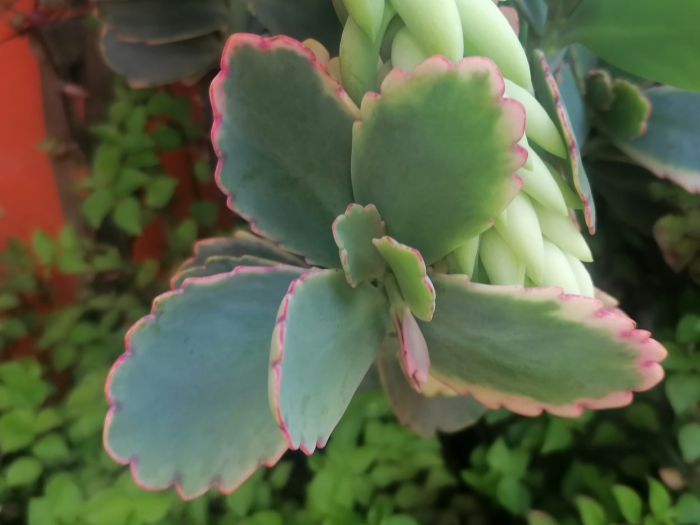Lavender Scallops
(Kalanchoe fedtschenkoi)
Lavender Scallops (Kalanchoe fedtschenkoi)
/
/

© taniaat
CC BY 4.0
Image By:
© taniaat
Recorded By:
Copyright:
CC BY 4.0
Copyright Notice:
Photo by: © taniaat | License Type: CC BY 4.0 | License URL: http://creativecommons.org/licenses/by/4.0/ | Uploader: taniaat | Publisher: iNaturalist |

























Estimated Native Range
Summary
Kalanchoe fedtschenkoi, commonly known as Lavender Scallops, is a perennial succulent originally from the rocky outcrops and sandy soils of Madagascar. It has since become naturalized in some regions of the southern United States. This plant typically grows up to 12 inches tall and features distinctive blue-green leaves with scalloped edges that can turn pink or red when exposed to strong sunlight. The foliage’s unique coloration is particularly striking during the cooler months.
Lavender Scallops blooms in late winter to early spring, producing upright flower stalks with small, tubular lavender to pinkish flowers that are moderately showy. In cultivation, it is valued for its drought tolerance and attractive foliage, making it a suitable choice for rock gardens, succulent gardens, or as a potted specimen. It thrives in well-draining soil, requires minimal water once established, and prefers full sun to partial shade. While generally low-maintenance, it is sensitive to frost and should be protected or moved indoors in colder climates. Kalanchoe fedtschenkoi can propagate easily from leaf cuttings, which contributes to its potential invasiveness outside its native range. Gardeners should be cautious and check local regulations before planting, as it may be considered invasive in some areas.CC BY-SA 4.0
Lavender Scallops blooms in late winter to early spring, producing upright flower stalks with small, tubular lavender to pinkish flowers that are moderately showy. In cultivation, it is valued for its drought tolerance and attractive foliage, making it a suitable choice for rock gardens, succulent gardens, or as a potted specimen. It thrives in well-draining soil, requires minimal water once established, and prefers full sun to partial shade. While generally low-maintenance, it is sensitive to frost and should be protected or moved indoors in colder climates. Kalanchoe fedtschenkoi can propagate easily from leaf cuttings, which contributes to its potential invasiveness outside its native range. Gardeners should be cautious and check local regulations before planting, as it may be considered invasive in some areas.CC BY-SA 4.0
Plant Description
- Plant Type: Succulent
- Height: 1-1.5 feet
- Width: 1-1.5 feet
- Growth Rate: Moderate
- Flower Color: Orange, Pink, Purple, Yellow
- Flowering Season: Spring, Summer, Winter
- Leaf Retention: Evergreen
Growth Requirements
- Sun: Full Sun, Part Shade
- Water: Low, Medium
- Drainage: Fast, Medium
Common Uses
Drought Tolerant, Fire Resistant, Groundcover, Low Maintenance, Rock Garden, Showy Flowers, Street Planting
Natural Habitat
Originally from the rocky outcrops and sandy soils of Madagascar
Other Names
Common Names: Gray Sedum, South American Air Plant
Scientific Names: , Kalanchoe fedtschenkoi, Bryophyllum fedtschenkoi, Bryophyllum fedtschenkoi, Kalanchoe fedtschenkoi var. isalensis,
GBIF Accepted Name: